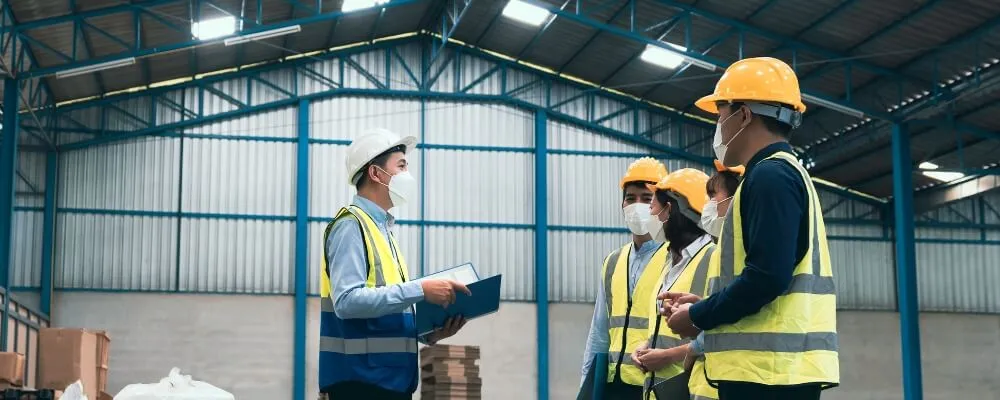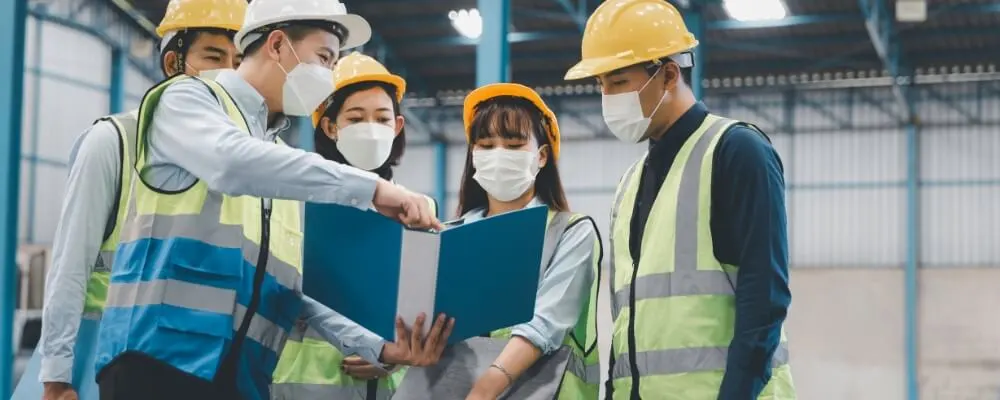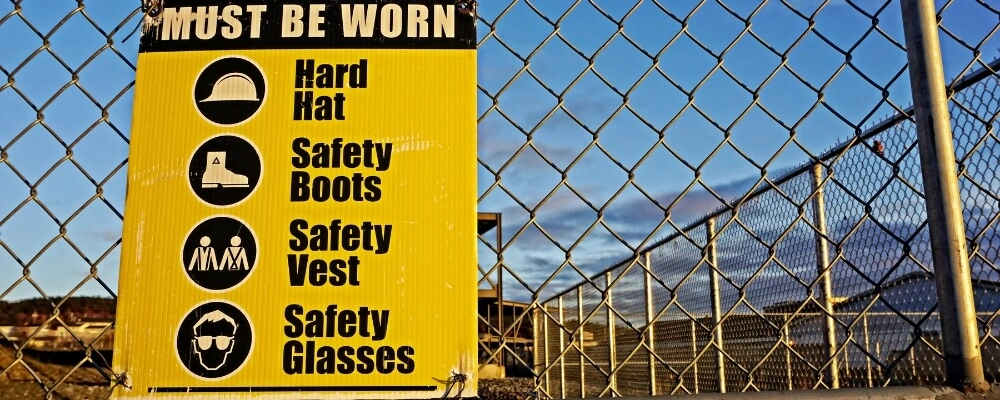In the evolving landscape of the 21st-century workplace, the importance of health and safety cannot be overstated. As industries innovate and workplaces diversify, protecting our most valuable asset – human capital – becomes paramount. Whether you’re a business owner, a manager, or an employee, understanding the key components that lay the foundation for a safe work environment is essential. Not only does this foundation safeguard lives and well-being, but it also ensures business continuity and success in an increasingly competitive market.
This blog will delve deep into the crucial components of a robust health and safety foundation, understand its overarching significance, and explore actionable tips to fortify this foundation in your workplace. Join us on this enlightening journey as we underscore the pivotal role of health and safety in shaping the future of work.
Importance Of Solid Foundations in Health and Safety
The importance of solid foundations in health and safety cannot be overstated. Such foundations are essential for complying with legal requirements and have broader implications for an organization and its stakeholders. Here are the primary reasons why these foundations are vital:
- Protection of Human Life and Well-being: The most significant and irrefutable reason for robust health and safety foundations is preserving human life. Ensuring a safe working environment reduces the risk of fatalities, injuries, and illnesses.
- Legal and Regulatory Compliance: Many countries have strict regulations around workplace health and safety. Solid foundations ensure that businesses meet these standards, avoiding legal consequences, fines, and sanctions.
- Enhanced Reputation: Companies known for their rigorous health and safety standards are more respected in the industry. They are viewed as responsible entities, which can lead to increased trust from customers, partners, and stakeholders.
- Improved Employee Morale and Productivity: Employees’ morale and motivation improve when they feel safe and valued. A positive work environment often increases productivity, as workers focus more on their tasks than potential hazards.
- Economic Benefits: Robust health and safety foundations can lead to fewer workplace accidents, which means fewer medical expenses, less compensation, and reduced downtime. Over time, this can result in significant cost savings for the organization.
- Reduction in Absenteeism: A safer work environment with fewer accidents and health issues leads to reduced absenteeism. This continuity in workforce presence ensures smooth operations and maintains productivity levels.
- Attract and Retain Talent: Top talents are likelier to join and stay with organizations that prioritize their safety. Companies with strong health and safety records can have a competitive edge in recruiting.
- Enhanced Operational Efficiency: A safe environment is typically a well-organized one. Procedures are clear, equipment is maintained, and there’s a systematic approach to tasks, all of which contribute to operational efficiency.
- Fosters a Safety Culture: Solid foundations lay the groundwork for a pervasive culture of safety, where every individual, regardless of their position, understands, values, and practices safety measures.
- Liability Reduction: Accidents can lead to lawsuits and compensation claims. Businesses can mitigate potential liabilities by minimizing accidents through a strong health and safety foundation.
- Continuous Improvement: Solid foundations in health and safety often incorporate mechanisms for feedback and adaptation, promoting a continuous improvement cycle that can benefit all areas of an organization.
- Stakeholder Confidence: Investors, partners, and other stakeholders are more inclined to associate with organizations with robust health and safety measures. Such measures indicate effective management and a forward-thinking approach.
Establishing solid foundations in health and safety is not just a regulatory requirement or a moral imperative; it’s a strategic business decision with multifaceted benefits that range from safeguarding human life to enhancing operational efficiency.

10 Key Components of Foundations in Health and Safety
Health and safety are critical aspects of any organization, especially in industries with significant risk of injury or health hazards. Here are 10 key components of foundations in health and safety:
1. Risk Assessment
Risk assessment is the foundational step for any health and safety initiative. It’s a systematic process to understand the potential dangers that might be present in a workplace. By spotting these hazards early, organizations can gauge how severe the risk is, who might be harmed, and in what way. This understanding lets companies prioritize which risks to tackle and decide on the best mitigation measures.
For example, in a manufacturing setting, an assessment might reveal that workers are at risk of inhaling toxic fumes from a certain process. Solutions might involve improving ventilation or introducing safer chemicals.
2. Policy Development
A robust health and safety policy acts as a blueprint for how an organization approaches the well-being of its employees. It’s a formal statement that underscores the company’s commitment to keeping its workers safe. This policy should clarify roles and responsibilities, usually crafted in consultation with various stakeholders.
It essentially answers questions like: Who is responsible for ensuring machinery is serviced? Who conducts the safety training? Moreover, a well-articulated policy serves as a reference, ensuring everyone knows what’s expected of them and what they can expect in return in terms of safety.
3. Training and Education
Knowledge is one of the most potent tools against workplace accidents and illnesses. Regular training programs are essential to ensure that employees are aware of and equipped to handle the risks. For instance, a warehouse worker should know the correct posture for heavy lifting to avoid back injuries.
Additionally, training sessions might cover topics like the proper storage of chemicals, how to operate specific machinery or first-aid techniques. These programs can be tailored to fit the unique risks of each role and should be updated as new risks emerge or processes change.
4. Safety Equipment and Personal Protective Equipment (PPE)
The work environment often demands specific gear to ensure the safety of its employees. This gear, known as Personal Protective Equipment (PPE), ranges from hard hats and safety goggles to earplugs and respirators.
The purpose of PPE is to create a barrier between the worker and the potential hazard. For example, a welder would wear a face shield to prevent eye injury from sparks. Employees must be provided with these protective tools and trained on their proper usage, maintenance, and storage.
5. Emergency Procedures
Despite best efforts, emergencies can and do happen. Preparedness can differ between a controlled response and a chaotic situation or life and death. Pre-defined emergency procedures ensure everyone knows exactly what to do when the unexpected strikes.
A clear plan ensures a swift and coordinated response, whether it’s a fire, chemical spill, power outage, or any other crisis. For instance, fire drills help employees familiarize themselves with evacuation routes and assembly points so panic and confusion are minimized if a real fire breaks out.

6. Regular Inspections and Audits
The essence of an effective health and safety system is not just in its creation but in its ongoing maintenance and evaluation. Regular safety inspections ensure that all equipment, machinery, and workspaces meet predetermined safety standards.
Over time, wear and tear, operational changes, or external factors might introduce new hazards or reduce the effectiveness of existing safety measures. Periodic audits, on the other hand, go beyond mere inspections. They evaluate the effectiveness of the entire health and safety system, gauging how well policies, procedures, and practices are working in unison to protect workers.
7. Accident Reporting and Investigation
Even with the best measures in place, accidents can happen. However, every accident or near-miss offers a learning opportunity. When incidents are reported promptly, organizations can dissect what went wrong, identify the root cause, and adjust their safety procedures to prevent similar events.
For example, if an employee slips because of a wet floor, the investigation might reveal the need for better signage during cleaning or perhaps a change in cleaning products or schedules.
8. Health Monitoring
Certain industries, such as chemical manufacturing or mining, expose workers to conditions that could have long-term health implications. In such cases, regular health monitoring is paramount. Companies can detect early signs of health issues by routinely checking the health status of employees — be it through lung function tests, blood tests, or other relevant examinations.
Early detection not only helps in immediate medical intervention but can also indicate if there’s a need to revise existing safety protocols to protect workers better.
9. Communication
In health and safety, clear and consistent communication is a cornerstone. Everyone in an organization, from top-level management to the newest recruit, should be on the same page regarding safety protocols. Effective communication channels ensure that concerns, updates, and feedback flow seamlessly throughout the organization.
Besides regular briefings or meetings, visual aids like safety signs, posters, and labels play a crucial role. They serve as constant reminders of safety protocols, ensuring that best practices are always front of mind for all employees.
10. Continuous Improvement
The world of work is dynamic, with new technologies, materials, and processes continually emerging. Consequently, health and safety measures can’t remain static. Organizations should foster a culture of continuous improvement where feedback from employees, lessons from incidents, and insights from new research are routinely integrated into the health and safety framework. This iterative approach ensures that the safety measures remain effective, relevant, and adaptive to the ever-evolving work environment.

Effective Tips For Establishing Solid Foundations in Health and Safety
Establishing a robust foundation in health and safety requires a strategic and comprehensive approach. Here are some effective tips to ensure this:
- Leadership Commitment: Health and safety must start at the top. When senior leadership is visibly committed, it sets the tone for the entire organization. Their involvement, support, and prioritization of safety can drive organizational culture more effectively than any policy.
- Engage Employees: Actively involve employees in health and safety decisions. Seek their input, listen to their concerns, and encourage them to share ideas. Employees who feel a sense of ownership are likelier to adhere to and champion safety protocols.
- Stay Informed and Updated: Ensure you know the latest industry standards, regulations, and best practices. Regularly attending workshops and conferences or subscribing to safety journals can help.
- Hire or Train Safety Experts: Having dedicated safety professionals, whether a safety officer or an entire department, ensures a focused effort on maintaining and improving health and safety standards.
- Regular Training: Continuous education is crucial. Offer training sessions for new employees and refresher courses for existing staff. Ensure these training are tailored to your industry and updated as new risks or technologies emerge.
- Use Technology: Leveraging technology can make health and safety management more efficient. Many technological solutions are available, from apps that send safety reminders to tools that monitor environmental conditions in real-time.
- Documentation: Keep meticulous records of everything related to health and safety — from risk assessments and training sessions to accident reports and inspections. This helps in compliance and provides data for analysis and improvement.
- Feedback Mechanism: Establish channels where employees can report hazards and near-misses or provide feedback without fear of reprisal. An open-door policy or suggestion boxes can be effective.
- Regular Reviews: Health and safety isn’t a set-it-and-forget-it initiative. Regularly review and evaluate all your measures, practices, and protocols. This helps in identifying areas of improvement and ensures your approach remains relevant.
- Promote Wellness: Beyond physical safety, consider the overall well-being of your employees. Programs that promote mental health, stress management, and general wellness can go a long way in creating a holistic safety culture.
- Visible Signage: Proper signage acts as a constant reminder of safety protocols. Ensure that signs are clear, visible, and placed strategically where they’re most needed.
- Celebrate Safety Achievements: Recognize and reward departments or individuals who commit to safety. This not only boosts morale but also reinforces the importance of safety.
By integrating these tips into an organization’s approach, businesses can ensure that health and safety are deeply embedded in their culture, promoting well-being and productivity.
Conclusion
In an ever-evolving work environment, the core principles of health and safety remain unwavering: the well-being and protection of every individual are paramount. As we’ve explored, establishing a robust foundation in health and safety isn’t just a regulatory or moral obligation but a strategic investment that yields both human and business dividends. It fosters trust, drives productivity, safeguards reputations, and preserves life’s invaluable sanctity.
As we move forward, let these insights serve as a compass, guiding organizations and individuals toward a future where safety isn’t just a priority but an ingrained culture. The task is clear: creating workspaces where innovation thrives, but never at the expense of human safety and well-being. By valuing and championing these principles, we can shape a safer, more productive, and harmonious world of work.

